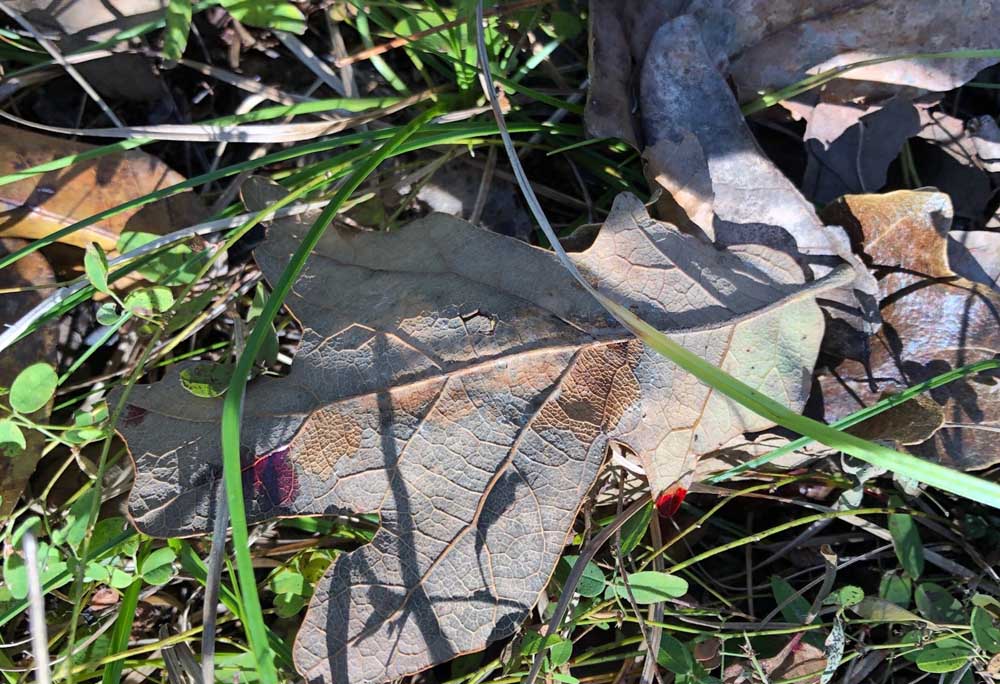A Lost Trail: Nothing Worse For A Deer Hunter Than Losing A Deer
Published 5:07 pm Saturday, November 30, 2019

- Deer hunters have an obligation to try as hard as they can to locate a wounded animal. Sometimes though the blood trail trickles to single drop, and you can only hope it was not a killing shot and the deer shows up again.
POSEY — It is one of those moments almost every deer hunter has felt, but no one enjoys. That moment when the blood trail runs out and there is no sign of the deer.
We have all felt that angst when a deer is clearly shot, but runs out of sight. Normally the search ends with a recovery, but not after at least a moment or two of doubt.
A conscientious hunter will feel remorse over a lost dove. I have seen some spend 20 minutes in a sunflower field looking for a downed bird while others fly past them well in range. Having to trail a deer is a thousand times worse.
My youngest son, Thomas, spent the last afternoon of archery season in a tree stand in Hopkins County. Hunting small acreage, he often does not see much. This year his game cameras had photos of at least two mature bucks he would consider taking.
He had hunted a couple of weekends with no success, and decided to give it one last try before the regular season opened. The evening started slowly, and he was about to give up when one of the bucks he was looking for walked out. A tree limb kept him from getting a broadside 25 yard shot, but when the buck stood quartered at 30 yards he let the arrow fly.
He felt the shot was a little back and high, but that the arrow had good penetration. With a lighted nock he found the arrow not far down the trail the deer had run. It had meat and blood all the way to the fletchings. He felt good about the shot, but with darkness setting in he decided to back out. The temperature was going to drop into the 30s, so he knew if the deer was down the meat would be good. The only concern would be coyotes finding it overnight.
Still, it was the right move following the axiom of “when in doubt back out.” Pushing a wounded deer is a huge mistake making recovery even harder.
At daylight the next morning I joined him and his friend Stephen Holcombe for the search and what I felt was a sure recovery. That optimism quickly faded when we got to where the arrow had fallen and did not discover a drop of blood. In fact the first drop would not be found for at least 20 minutes and there was not much more than a drop here, then 10 yards away a second drop and 20 yards from that a couple of more.
With their younger eyes I left them to follow the blood trail while I went out farther to walk game trails and just hope I spotted antlers sticking up. Five hours later my health tracker showed I had walked several miles back and forth. They had moved maybe 250 yards from where they had started. And that is where we found the last drop.
Kevin Dubose of Dilley has been using dogs to track deer in South Texas and the Hill Country for 17 years. With almost a 1,000 runs under his belt, he has learned there are tendencies that wounded deer have depending on where they have been shot, and common mistakes hunters make making it harder to recover the deer.
“Water is always our saving grace,” Dubose said. “They are usually going to try to head to water or any kind of creek if they are belly or liver shot.”
On places lacking water, Dubose said the next option is the thickest cover available, a draw in the Hill Country or thick brush in East Texas.
He said the exception to that rule is a deer that is leg shot will not go to water.
“If it has a broken leg I would say tough luck,” he explained.
Dubose suggests when a hunter, whether using a bow or a gun, takes a shot and the deer runs off the first thing they should do is to re-enact the shot in their mind and try to picture where they hit.
“If it is back give them seven or eight hours if you can then go to a tank or creek,” he said.
If you are uncertain, he said it is OK to begin a search, but to be cautious.
“What I always tell folks if they go a hundred or 150 yards and things aren’t looking good, back out. Everyone knows what blood should look like. If they are hit good odds are they won’t go over 150 yards,” Dubose said.
The worst mistake hunters can make, especially for a buck good enough the hunter may want to bring in a search dog, is to bring in a group of people that spread out to look around. He said that is going to make it that much harder on the dog.
While the quicker a dog is brought in the better, Dubose said they could sometimes be successful 24 to 30 hours later if the area is left pristine. However, he said that is not something he would recommend.
Dog trackers are becoming more common around the state, however, the quality and price can vary. Hunters in Frio County and surrounding areas of South Texas and the Hill Country can contact Dubose at 830-965-2787.






